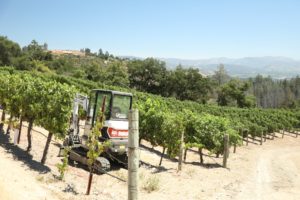
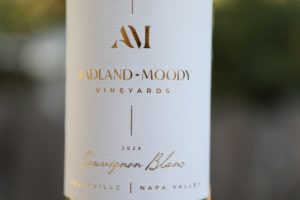
 Aadland Moody Vineyards is perched on the slopes of Spring Mountain bordering Spring Mountain Road. This 17-acre property is previously the site of Beringer owned vineyards that at that time was called the “Los Hermanos Vineyards” or, “the brothers vineyards” in honor of Frederick and Jacob, the two brothers who founded Beringer Winery. Jacob’s son Charles and his wife lived on the property for a number of years. Charles sister Bertha was quite creative during prohibition so as to help keep Beringer “afloat” during those trying times in the wine industry. She came up with the idea to turn grapes into raisin cakes which could then be used to create cider and grape juice for home consumption. Beringer was one of the few Napa wineries to stay open the entire length of prohibition. Later more Beringer family members lived here including Karl and Olga Beringer.
Aadland Moody Vineyards is perched on the slopes of Spring Mountain bordering Spring Mountain Road. This 17-acre property is previously the site of Beringer owned vineyards that at that time was called the “Los Hermanos Vineyards” or, “the brothers vineyards” in honor of Frederick and Jacob, the two brothers who founded Beringer Winery. Jacob’s son Charles and his wife lived on the property for a number of years. Charles sister Bertha was quite creative during prohibition so as to help keep Beringer “afloat” during those trying times in the wine industry. She came up with the idea to turn grapes into raisin cakes which could then be used to create cider and grape juice for home consumption. Beringer was one of the few Napa wineries to stay open the entire length of prohibition. Later more Beringer family members lived here including Karl and Olga Beringer.
The property was purchased in 2022 by Justin Moody and Kristine Aadland, both dentists. Justin founded and operates Horizon West Dental group; the company has multiple locations in Nebraska providing a variety of dental care services. He also founded New Horizon Dental Institute, a non profit which has donated more than 40 million dollars in dental implants. In 2014 he founded Implant Pathway, an organization offering dental curriculum and courses. And Kristine founded Aadland Dental in 2009, a dental service provider based in Vancouver, Washington.
Justin’s first trip to Napa Valley was in his mid 20s in 1995, accompanied by his life long friend, Curt Rising, a pharmacist; both met for the first time as young children. Justin was in California presenting a dental research paper at a medical conference at the University of Pacific (UOP), San Francisco. Both men took an extra day to visit Napa Valley that trip; they stayed overnight at a home on Langtry Road on Spring Mountain, fortuitous because nearly 30 years later Justin would own a winery within a short drive of where he and Rising first stayed. Justin remembers visiting Frog’s Leap Winery and Cakebread Cellars and a restaurant they wanted to dine at, but decided not to due to the requirement that men needed to wear jackets.
Inspired by this trip, Justin returned to Crawford, Nebraska with the intent to research grape varieties that would grow in the region. Crawford, Nebraska is a tiny community of about 800 people and is where Justin was born and raised. His family settled here in 1883 as part of the Homestead Act of 1862 granting settlers land if they lived on and ‘improved’ their properties. His family continues to both grow wheat and raise cattle. Crawford is located in the far northwest corner of the state in a part of the country notable due to its lack of large cities; Omaha is a 7.5 hour drive and Denver more than 4 hours.
During his research he discovered several hybrid varieties developed in Minnesota and Michigan as well as Norton (commonly planted in Missouri). Nurseries suggested he start with 50 vines of each variety, but he wanted to go bigger and ultimately 5 acres of vines were planted in 1997, eventually reaching a total of 8 acres. They bought a number of smudge pots from California growers, where the use of this technology was waning in favor of frost fans and sprinkler systems. They figured out that mixing in motor oil with diesel creates more smoke, effectively providing a larger footprint of warm air.
He and his childhood friend Rising, founded the third ever bonded winery in the state of Nebraska; they called their winery Lovers Leap Vineyards, named after a prominent outcropping of rock easily seen from their vineyards. While their vineyards were located outside of town, they opened their winery in downtown Crawford in late 1999 at 432 2nd Street. This was also a family affair; Justin’s parents Dave and Mary were involved and his cousin George, a railroad conductor grew some of the grapes. For reference the first Nebraskan bonded winery was Cuthills Vineyards (1994) followed by James Arthur Vineyards (1997). According to Wikipedia there are now approximately 35 bonded wineries in the state.
One day on a lunch break in Crawford he met a friend who owned a hunting preserve in the area. His friend casually mentioned a winery owner from Sonoma who he met on his hunting reserve had seen the Lover’s Leap Winery sign and was inquiring about its owner and wanted to stop by and see the operations. Justin recalls being a bit intimidated to show this winemaker his basic options, knowing that his setup was probably far different than the winery owner utilized in Sonoma. Lover’s Leap Winery used old refrigerated dairy tanks. Justin remembers contacting owners of barns in the area housing these tanks and the owners giving him the tanks for free.
The Sonoma vintner was Sam Sebastiani (died 2025). Justin showed him his little operation; Sam asked the following question, “how did you learn how to make wine?” Justin told him about the two week course he and his father attended in the summer a few years back at Ohio State. At the time, Justin didn’t have a budget to buy oak barrels; there were none in the winery. Sam immediately noticed this and suggested that the wines should have some oak. He returned to Sonoma County; a few weeks later he called Justin and said something like, “I have some extra oak barrels you can have, I don’t know how you will get them home, but if you can, they are yours”.
This was in 2000, soon after Lover’s Leap Vineyards was founded. Justin flew to San Francisco, took at taxi to a Ryder Truck rental center and then drove the truck up to Viansa Winery, still under Sebastiani’s ownership at that time. He had no idea how many barrels Sebastiani would give him. Justin pulled up to the loading dock at Viansa; Sebastiani was there to greet him and immediately noticed Justin had no barrel racks. He instructed his employees to fill the truck with as many barrels as possibly would fit. He didn’t want any money for the barrels. Justin drove the Ryder truck back to Crawford.
And then a few days later, Sebastiani called Justin again, this time offering to fly his winemaker at the time out to Crawford to provide additional support. This was during harvest. His winemaker spent a day with Justin offering advice about making wine from the hybrids they were already growing and offering additional insights about barrel aging and cold stabilization including timing, temperatures, using cream of tartar, etc.
Justin served as president of the Nebraska Grape Growers Association, a group he co-founded with several other Nebraska winery owners. He hired a professional winemaker in 2002; the winery grew, always focusing on quality, eventually reaching a production of around 2,600 cases including from both grape wine and wines made from other locally grown fruits. One of their best tasting and selling wines was a barrel aged dry apple wine. The wines medaled at several competitions including in New York and Indiana. At one point, Lover’s Leap Winery operated a retail outlet closer to the 80 freeway. Eventually Justin sold the winery to his winemaker and several investors.
—
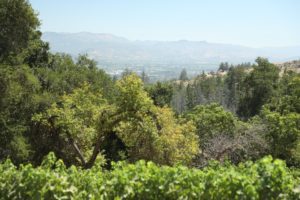
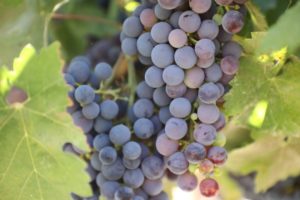 Justin had thought about practicing dentistry in Napa Valley but soon realized there are already plenty of practicing dentists in the region. So he continued to visit as time allowed. Justin and Kristine attended their first Bottle Rock in the city of Napa in May 2022. Whenever he travels Justin enjoys checking Zillow to get an idea of property prices in the region. He noticed a certain property had significantly dropped its price that weekend. He called the real estate agent; soon both he and Kristine were admiring the views from this piece of property on Spring Mountain. He recalled the views were somewhat similar to where he and Rising had stayed on nearby Langtry Road. They put in an offer that day and it was accepted.
Justin had thought about practicing dentistry in Napa Valley but soon realized there are already plenty of practicing dentists in the region. So he continued to visit as time allowed. Justin and Kristine attended their first Bottle Rock in the city of Napa in May 2022. Whenever he travels Justin enjoys checking Zillow to get an idea of property prices in the region. He noticed a certain property had significantly dropped its price that weekend. He called the real estate agent; soon both he and Kristine were admiring the views from this piece of property on Spring Mountain. He recalled the views were somewhat similar to where he and Rising had stayed on nearby Langtry Road. They put in an offer that day and it was accepted.
They wanted to eventually build a home on the property and perhaps make a little wine; the grapes were contracted for at the time. But as it happens, plans changed, in a big way. And in addition to building a home, they decided they wanted to build a winery. The property came with a number of coveted permits including being permitted to produce up to 15,000 gallons of wine a year, a sizable bond footprint inherited from the previous owner, visitation rights for hosting visitors, three existing and producing wells and shared water rights with a neighbor.
In talking with other winery owners or others in Napa Valley, the advice was to utilize local services as much as possible. Kristine searched online for a local architect and discovered Signum Architecture, whose office at the time was located in St. Helena. Ready to temporarily move in to the small cottage on their newly acquired property, they drove their old pickup truck from Oregon, loaded to the top with furniture from Ikea, two new mattresses still in their original packing and their silver Labrador. They met with the co-owner of the company and lead architect Juancarlos Fernandez at his office. They realized he was interviewing them. At the end of their brief meeting Juancarlos suggested they drive up to the property. He had never been on site but knew its location.
After arriving on site, Kristine remembers Juancarlos walked by himself to an overlook and spent 7 minutes solitary, lost in thought. He turned around and said, “I would like to build your home”. Justin and Kristine looked at each other and simultaneously said one word, “ok”. Remarkably within less than a year of hiring his services, construction had begun, both on their home and the winery.
Kristine’s parents were general contractors and owned a bridge building company; in a connection to Napa Valley, her father used to work with Hensel Phelps Construction, the company run by Joseph Phelps, the founder of Joseph Phelps Winery. She remembers one of her father’s last projects was Joseph Phelps Winery, including sourcing the redwood timbers for the winery in 1972 from near Annapolis in northern Sonoma County, when a bridge was being replaced. Her parents were also very involved in the national construction community; she remembers attending gatherings of industry leaders with her parents and hearing their stories, problems and solutions presented. But mostly she remembers their camaraderie and wine always being served, and the associated stories about the bottles.
—
The previous owner of this property, Petrus Bekker worked in Silicon Valley in the biopharmaceutical industry. He began looking for a vacation property in Napa Valley; at the time of his search there were not many properties available for sale. This site was one of them. He was supposed to see this property with his real estate agent but she was sick and he ended up driving up Spring Mountain alone in search of the property.
It is somewhat fortuitous in regards to how Petrus met his original vineyard manager and winemaker Emil Tedeschi. While driving along the narrow windy Spring Mountain Road Petrus stopped by the side of the road to look out at the views and the property. Emil, a veteran winemaker in the valley stopped because he thought Petrus had broken down on the side of the road and needed help. And those who know Emil, know that his never ending curiosity is contagious. Little did he realize that this random meeting on the side of the road between two strangers would form the start of a relationship where Emil would become Petrus’s winemaker. Petrus ended up purchasing the property and planting vineyards in 2002.
And this chance meeting eventually led to Emil’s son, Mario Tedeschi becoming Petrus’s vineyard manager. After the transition in ownership, Mario became Aaadland Moody’s General Manger and continues to oversee the management of the vineyard.
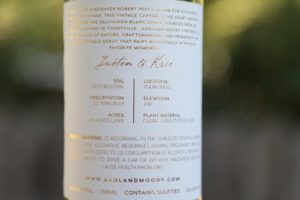
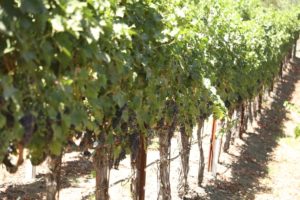 The site had been previously planted by the Beringers in the 1940s but at the time of the replant in 2002 there were just a few old scraggly vines still growing. The estate is 15 acres, 9 of which of are planted to vines including several clones of Cabernet Sauvignon, Petit Verdot and Cabernet Franc. We have walked through the vineyards on a number of occasions over the years. The vines grow on very steep and rocky soils. Productions as expected are low; typically 2 tons or less per acre are harvested annually. The site used to be planted to Golden Chasselas grapes which back in 1940s and 1950s was used for Beringer’s sherry.
The site had been previously planted by the Beringers in the 1940s but at the time of the replant in 2002 there were just a few old scraggly vines still growing. The estate is 15 acres, 9 of which of are planted to vines including several clones of Cabernet Sauvignon, Petit Verdot and Cabernet Franc. We have walked through the vineyards on a number of occasions over the years. The vines grow on very steep and rocky soils. Productions as expected are low; typically 2 tons or less per acre are harvested annually. The site used to be planted to Golden Chasselas grapes which back in 1940s and 1950s was used for Beringer’s sherry.
While dining one fine evening at Dee Lincoln Prime in Frisco Texas, Justin and Kristine called the sommelier over to their table. They had a specific request, asking him if he had any Spring Mountain wines from Napa Valley in his cellar. He replied with something like, “I do have some wines from Pride Mountain, but your request is both timely and odd because I have a winemaker here this evening from Napa Valley who has a strong connection to Spring Mountain”.
Winemaker Krisi Raymond was at the same restaurant showcasing a couple of her own wines bottled under the brand, Five Vintners. The sommelier proceeded to bring Krisi over to their table for an introduction. She asked them what their connection was to Spring Mountain. Justin told her they had recently purchased a property and were planning on building a winery. It turned out that they had purchased the property that used to be owned by her grandparents. Her father was actually born on the property. And she told them all about her memories spent here including swimming in her grandparents pool in the summers.
Like many properties on Spring Mountain 2017, this site suffered significant damage from the Glass Fire. Sadly the original ranch style house dating from when the Beringer’s owned the property burnt to the ground, as did the wine cellar and all the wines housed within. And the small wooden bonded winery was also destroyed. The fire also burned part of the edges of the vineyard; we remember visiting this property during the fires, with flames still burning on site after the house was destroyed. The wine cellar had completely sunk into the ground. It was the first time we had ever sampled ripe grapes that had been significantly ‘torched’ by fire but not burned; they had become jammy and expressed flavors that were almost prune-like. One advantage according to Mario Tedeschi since the fire, is the loss of the surrounding forest has led to more sunshine hours, benefitting their vineyard.
Moody and Aadland built their home on the footprint of the previous house while also constructing a tasting room and overseeing the drilling of a nearly 7,000 square foot wine cave to be used for the production of their wines. The first harvest under their ownership on the property was in 2023, a Cabernet Sauvignon; the first crush on the property will be in 2026.
Select Wines
Whites
Justin has known the Hoxey Family, the owners of Ghost Block wines and Napa Wine Company for many years. The Aadland Moody wines were produced at Napa Wine Co., in 2023, 2024 and 2025. It was the Hoxey’s who introduced them to their winemaker Bob Pepi. The first wines released from Aadland Moody were Sauvignon Blanc and Sémillon, grown in Yountville on vineyards owned by the Hoxey family. There isn’t much Sémillon in Napa Valley, and these vines are particularly old – planted between the late 1960s and early 1980s.
The 2024 Aadland Moody Sauvignon Blanc, Yountville Napa Valley is 77% Sauvignon Blanc and 23% Sémillon. This wine is pale straw in color; singing brightly, the fresh, floral, herbal and tangy bouquet sports scents of jasmine, orange blossom, pineapple, golden plums, apricot, passion fruit, pineapple guava, white peaches and nectarines with an aromatic higher-toned lift provided by aromas of lemon zest, grapefruit, lemongrass, thyme and tarragon. This wine is fully ripe at its listed 13.3% ABV, but leans more towards an herbal and citrusy expression of the variety, rather than tropical. Juicy, fresh and mouthwatering, this wine tastes like not fully ripe pineapple, green apple, guava, pear, passion fruit, honeydew melon, lemon juice, lemon verbena, lime and a light note of tarragon, most noticeable on the finish. Clean, zippy and invigorating, its silky texture is buoyed by its vivacious and persistent acidity. Offers a light saline or briny character. This wine should be paired with something fresh from the sea, preferably housed inside of two shells.
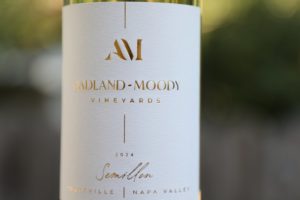
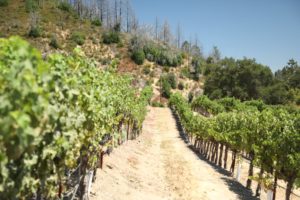 The 2024 Aadland Mood Sémillon, Yountville Napa Valley is 98.7% Sémillon and 1.3% Sauvignon Blanc. This wine is pale to medium straw in color; if we were smelling this wine in the middle of winter, our first thought would be of spring florals. Rather than showcasing California ripeness, a character often expressed with the rare Napa Valley wines made from this variety, the bouquet is achingly bright and vivid. It smells like star jasmine and citrus blossom, lemon zest, kaffir lime, lemongrass, green apple, honeydew melon, passion fruit, chamomile and chalk. On the palate there are flavors of pineapple guava, a flavor we are intimately familiar with having harvested these fruits every fall for more than 30 years from our favorite cemetery in Santa Rosa, not fully ripe pineapple, lemon juice, lime, crushed vitamins and lingering layers of lemongrass and tarragon. Silky textured. Its alcohol is a refreshing listed 12.3% ABV. Pair with lunch at a restaurant at the end of dock, on any of a number of islands in Thailand overlooking the beautiful waters of the Indian Ocean and a spicy Thai seafood salad. This wine was aged 100% sur lie in stainless steel barrels.
The 2024 Aadland Mood Sémillon, Yountville Napa Valley is 98.7% Sémillon and 1.3% Sauvignon Blanc. This wine is pale to medium straw in color; if we were smelling this wine in the middle of winter, our first thought would be of spring florals. Rather than showcasing California ripeness, a character often expressed with the rare Napa Valley wines made from this variety, the bouquet is achingly bright and vivid. It smells like star jasmine and citrus blossom, lemon zest, kaffir lime, lemongrass, green apple, honeydew melon, passion fruit, chamomile and chalk. On the palate there are flavors of pineapple guava, a flavor we are intimately familiar with having harvested these fruits every fall for more than 30 years from our favorite cemetery in Santa Rosa, not fully ripe pineapple, lemon juice, lime, crushed vitamins and lingering layers of lemongrass and tarragon. Silky textured. Its alcohol is a refreshing listed 12.3% ABV. Pair with lunch at a restaurant at the end of dock, on any of a number of islands in Thailand overlooking the beautiful waters of the Indian Ocean and a spicy Thai seafood salad. This wine was aged 100% sur lie in stainless steel barrels.
Reds
The first red wines are slated to be released sometime in mid to late spring 2026 including their first bottling from the estate, the 2023 Aadland Moody Cabernet Sauvignon, Spring Mountain Napa Valley. And red wines are also being produced from similar elevation sites including from Atlas Peak, Mount Veeder, Howell Mountain and Diamond Mountain. The grapes for these wines have come from vineyards that Pepi or Tedeschi are already familiar with.
—
Rather than hire an established branding and graphic design firm from within the wine industry, they reached out to Joshua Scott, the owner and CEO of Ohio based Studio 8E8, a dental marketing agency. Studio 8E8 designed their elegant and eye catching label. And it turns out that Joshua is a level three sommelier; he sat in with Pepi for one of their blending sessions. This was his company’s first wine label design.
Once open for visitors, tastings will be hosted by either Justin or Kristine, with a small team who can fill in for them in their absence. Both Justin and Kristine appreciate their neighbors have been so open and willing to share information. And they want to pass that on to their visitors, helping break down some of the perceived intimidation barriers to entry associated with wine. Part of their hospitality will be educational including trying the same wines from different sized and shaped stemware and noticing the resulting differences and tasting the same wines from barrels made in the exact same manner including three years air dried, fire bent and medium plus toast levels. The only difference being the forests where these trees grew.
When all their wines are available, total annual production will be under 2,000 cases. The wines will be sold primarily direct to consumer but with some limited distribution to places Justin and Kristine regularly frequent including Portland, Scottsdale, Nebraska and Texas. For more information or to purchase wine, visit: www.aadlandmoody.com

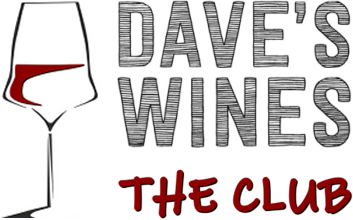




Leave a Reply